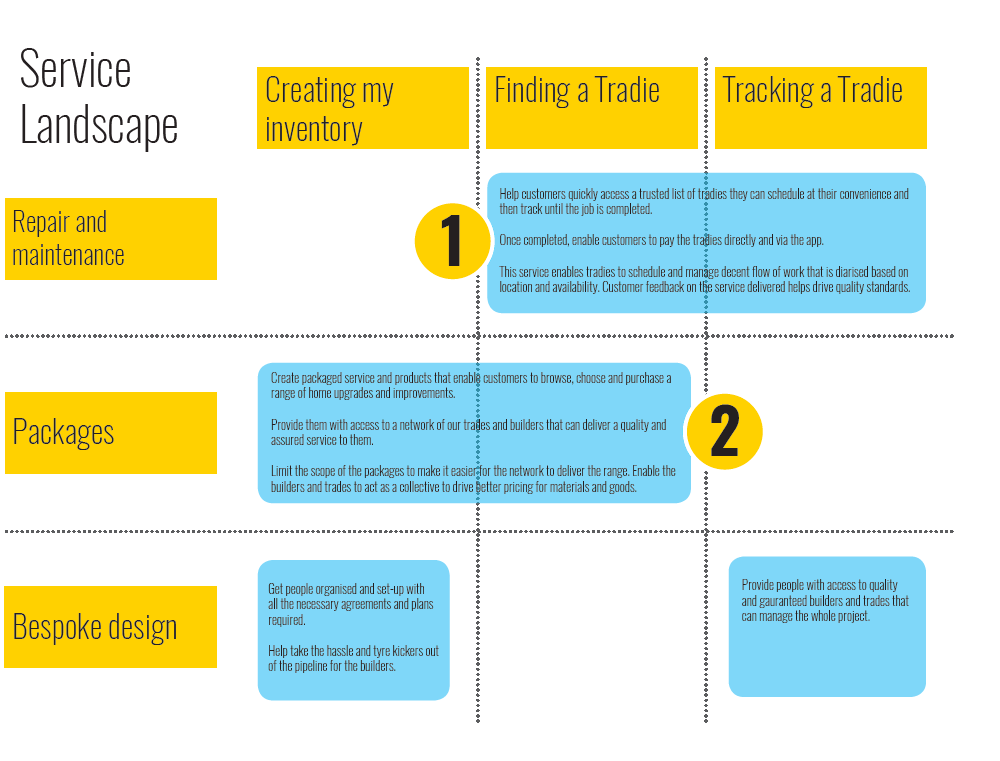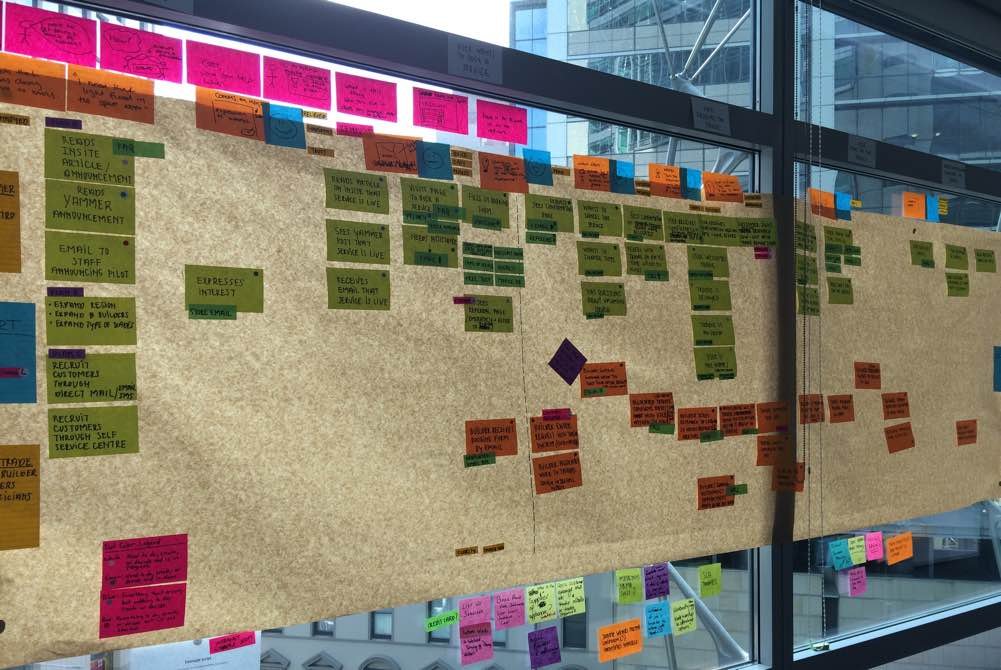Service Design: Trades for My Home
Project Background
Late 2015, a small team was tasked with delivering the MVP (minimum viable product) of a tradesmen service, in just 5 weeks. The goal was the leverage the builders network IAG already had in place, while delivering a valuable service to internal customers initially, and ultimately external customers. Given the large size of IAG, delivering any end-to-end service in 5 weeks was unheard of. We were in affect a ‘startup’ but within a large organisation, which had certain challenges.
My Role
As the Lead UX, I was responsible for not just the initial digital booking but also the tradesmen experience with the customer. I worked closely with the team consisting of a developer, product owner, SME and iteration manager in an agile format to deliver the best possible experience to our users, on time and on budget.
The Process
Research
I started by immersing myself in the preliminary research (from colleagues in the HCD team), which had tested the initial service concept with both customers and also tradesmen.
The findings of this research gave us direction about the type of service users of such a service want, and how it could leverage the current network of IAG tradesmen.
Market research is also important, given no one in the project team had building experience, so as a team, we also spent time researching competitor services. Some colleagues needed tradesmen for work around their homes, which was the perfect opportunity to test out these competitor services.
Service Flow
Based on the initial research and our current network of builders’ constraints, a service was created. My main focus during this phase was the communication and touch points with the users. Not enough communication from the tradesmen leads to customers feeling like the service quality is low. Too much communication and the touch points’ value to the customer is then questionable.
I mapped out the user flow, to communicate with the team and stakeholders what the touch points look like, when a customer goes through the service.
Black-box Service Design
At this stage, our project team had no contact with the builders or their trades network, which made it very difficult to design an optimal service. As a service designer, I needed to be in touch with the service providers, designing a service from a distance would be a risk. It felt almost like a ‘black-box’ service design project. At every weekly showcase to the business, I raised this as a project risk.
However due to the nature of the environment, the very compressed timelines, the businesses’ limited understanding of what it means to design a service, and the builders inability to co-locate with us, and various other reasons, getting closer to the tradesmen for whom I would be designing this service became next to impossible.
Customer Journey Mapping
In order to outline more vividly the proposed service journey for our users, to the stakeholders, with the team, I mapped out the customer journey map.
It was necessary to look beyond the digital booking experience (which was our main focus given the limited influence we had over the tradesmen service), and map out the journey from start to finish.
Rapid Prototyping
I worked closely with our developer to wireframe, and prototype the digital parts of the service, so that we could test as soon as possible. Using our internal social media space (Yammer), I recruited internal users, to test with every few days.
The rapid rounds of testing helped us refine our content and copy, as well as the responsive booking form. Essentially we were validating our hypothesis on a daily basis, in time for the launch in a few weeks.
Go Live
We went live with the service in Sydney on time, after 5 weeks. As it was an internal service initially, it was only accessible within the company network, and only communicated with internal channels such as the Intranet and team meetings. We collected feedback from all early adopters, and continued to make tweaks to the service as much as possible.
We collected feedback from all early adopters, and continued to make tweaks to the service as much as possible.
Once the service was live, I was bombarded with customer feedback from many channels, and needed a way of visualising it for the stakeholders. I also needed to communicate to the business, the parts of the service I could not design, and what that was leading to, customer service wise.
Service Blueprint
With the help of the team, we created a physical service blueprint, and mapped on it, every positive and negative feedback received from customers. The negative feedback was displayed using red post-it notes, and very soon it became clear where most of service problems lay.
Service Improvements
As we continued to improve the MVP, it was obvious that the tradesmen who were to deliver this service needed on boarding and training. We created service charters, spent time off sight at the builders venues and worked more collaboratively to iron out service inconsistencies.
From these learnings, it was clear that the original hypothesis on which the MVP was based on, needed to change. We then pivoted the MVP in a very different direction, which we felt was more inline with what the market place was asking for.
The second MVP is now underway.






